"That fellow West is a good man in a storm." … "He didn't sleep for four nights! Four whole nights." And if that trip had been his idea of a vacation, where, the psychologist wanted to know, did he work?
The most famous book written about designing computers features a company - Data General - and a computer - the Eclipse MV/8000 - that both disappeared a long time ago. It’s a testament to that book’s quality that it’s just as fascinating as it was when it was published four decades ago.
What makes Tracy Kidder’s ‘The Soul of a New Machine’ so good?
1. “There’s so goddamn much money to be made.”
“I’m Ed de Castro, president of Data General Corporation. Seven months ago we started the richest small computer company in history. This month we’re announcing our first product: the best small computer in the world … Because if you’re going to make a small inexpensive computer you have to sell a lot of them to make a lot of money. And we intend to make a lot of money.”
Data General Corporation’s first advertisement.
For many years sociologists and others have written of a computer revolution, impending or in progress. Some enthusiasts have declared that the small inexpensive computer inaugurated a new phase of this upheaval, which would make computers instruments of egalitarianism.
Money and upheaval. Tracy Kidder’s Soul of a New Machine locates computers firmly where we would place them today. But the geography of Kidder’s 1979 book is not Silicon Valley but thousands of miles away in Massachusetts.
Digital Equipment Corporation had started the ‘minicomputer’ revolution there in 1965. Three years later Ed de Castro, the architect of DEC’s breakout machine, the PDP-8, helped to found Data General (DG).
DG was ambitious and scrappy. One - unpublished - advertisement was an uncouth pre-echo of Apple’s later defiance at IBM’s intrusion into its territory.
They Say IBM’s Entry Into Minicomputers Will Legitimize The Market. The B*****ds Say, Welcome.
DG were the ‘bad guys’ of the minicomputer world, the ‘Darth Vader of the industry’. There were even rumours that they had burned down the factory of a smaller rival.
But there was more to DG than its attitude: there was technical excellence. DG’s first machine, the Nova, was genuinely innovative and soon established itself as a effective competition for DEC’s PDP minicomputer series.
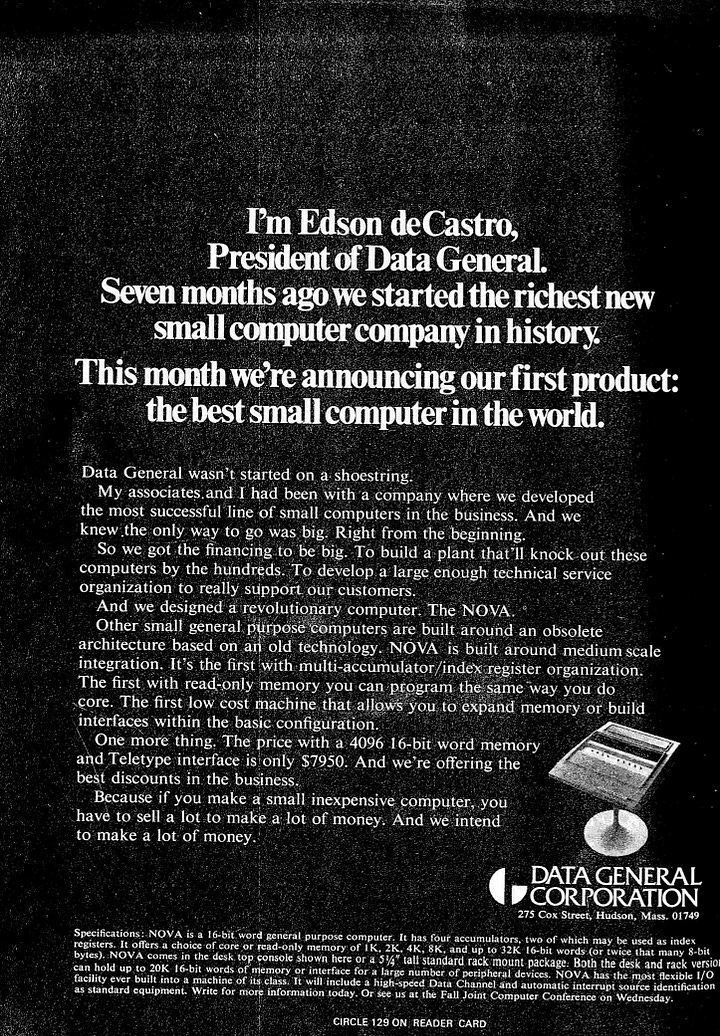
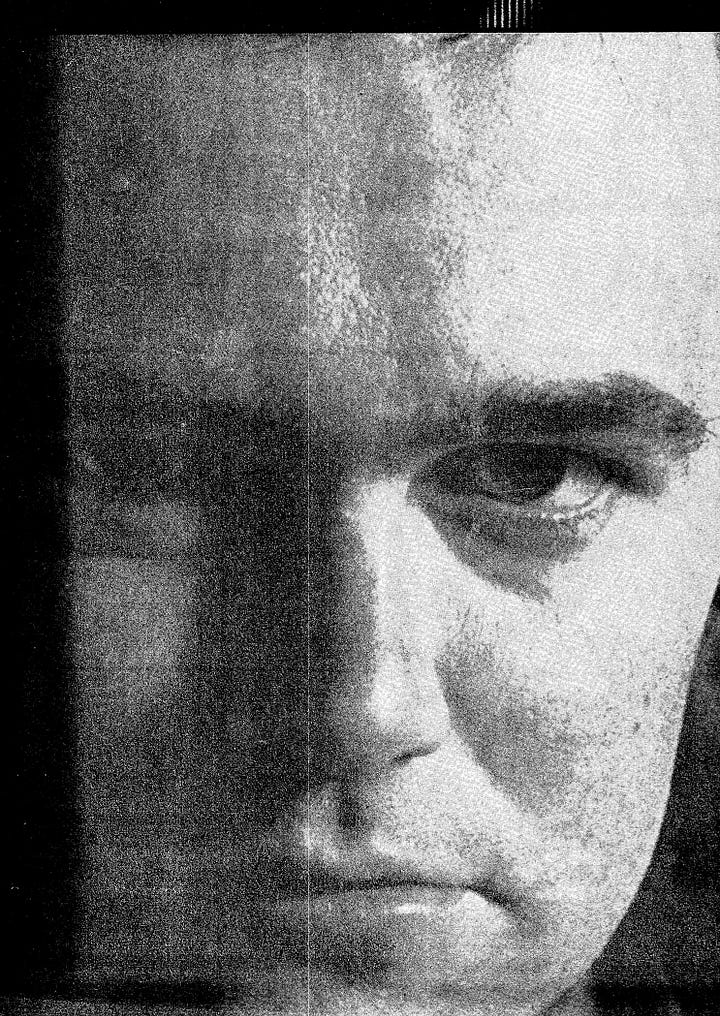
DG took thriftiness to an extreme, paid modest salaries to its most senior employees and no dividends to its stockholders. The combination of aggression and technical achievement helped de Castro and colleagues achieve spectacular growth. By 1975, seven years after its founding, DG had reached $100m in sales.
2. “We’re gonna get schmeared if we don’t react to VAX.”
Even as DG’s ascent continued an existential threat appeared in 1977.
DEC’s VAX ‘super-mini’ was 32-bit when DG’s existing designs, the Nova and Eclipse, were 16-bit. DG was suddenly years behind it’s great rival. VAX was an instant success and DG was in trouble.
DG started two projects to respond to DEC’s new machine. An ‘official’ one based in North Carolina, and a ‘rebel’ one in Westborough, Massachusetts.
Leading the ‘rebel’ project was Tom West.
He was decisive, and in his manner, exact. For all of that, he was vague. "When I first went to work, he was my boss," an engineer said of West, "and it was amazing! Half the time I couldn't figure out what he was saying." He was not always this way, said one of his oldest colleagues, but sometimes you got the feeling that West expected you to be on his secret wavelength, and if you weren't he'd be disappointed in you. If you weren't, that was your problem. He didn't have time to explain.
Seen at the wheel of his sporty red Saab, driving to work down 495, West made a picture of impatience. His jaw was set, he had a forward lean. Sometimes he briefly wore a mysterious smile. He was a man on a mission.
The ‘rebel’ project would look to take advantage of a chink in the VAX’s armour.
DEC’s VAX was only “culturally compatible” with the line of machines that preceded it. Data General should build a 32-bit machine that was fully compatible with Eclipses. “From a marketing point of view what a win that would be!”
After a number of false starts, the project got underway in earnest in 1978, with a core of experienced engineers supplemented with a group of new - and inexpensive - college graduates.
To the dozen or so old hands-old in a relative sense-were added about a dozen neophytes, fresh from graduate schools of electrical engineering and computer science. These newcomers were known as "the kids." West was the boss, and he had a sort of adjutant-an architect of the electronic school-and two main lieutenants, each of whom had a sublieutenant or two. One lieutenant managed the crew that worked on the hardware, the machine's actual circuitry, and the members of this crew were called, and called themselves, "the Hardy Boys." The other main part of the team worked on microcode, a synaptic language that would fuse the physical machine with the programs that would tell it what to do. To join this part of the group, which Alsing ran, was to become one of "the Micro-kids."
The “Hardy Boys” and the “Micro-kids” were in two races. One against DEC’s VAX and another against DG’s own North Carolina team. They will be building a new machine and it soon has a name: “Eagle”.
3. “Look into computers”
Then into the Eagle team stepped journalist Tracy Kidder.
Kidder: About six years before I started, I had been a journalist writing for the Atlantic Monthly. I went in to my editor one day because I had nothing to do and asked him what I should do next. He said "Look into computers." I asked where I should start and he told me to go see West, whom he knew. So I did and then one thing led to another.
West: It was a little more complex than that. Tracy decided that he was going to write "The Book" about all computers. He went to the library and found that there had already been many stories written about the whole world of computers. Then it was going to be the whole world of mini-computers, which I suspect even today is too big a story to tell. It kept narrowing and narrowing, until, rather accidentally it became focused on a single machine.

4. “Flying Upside Down”
Work got underway on the design of Eagle. The architecture is specified in enormous detail. But then the project dissolves into what can seem like anarchy, with the Hardy Boys and the Microkids clashing against each other and against the timetable.
For example, Microkids and Hardy Boys are arguing. A Microkid wants the hardware to perform a certain function. A Hardy Boy tells him, "No way—I already did my design for microcode to do that." They make a deal: "I'll encode this for you, if you'll do this other function in hardware." "All right."
What a way to design a computer! "There's no grand design," thinks Rosen. "People are just reaching out in the dark, touching hands." Rosen is having some problems with his own piece of the design. He knows he can solve them, if he's just given the time. But the managers keep saying, "There's no time." Okay. Sure. It's a rush job. But this is ridiculous.
As work progresses a cast of characters comes into and out of view.
Tom West is there throughout. Encouraging, cajoling, sometimes enigmatic, sometimes shouting commands. Always thinking about the machine and his team.
Two prototype machines are built which the team nickname ‘COKE’ and ‘GOLLUM’.
Work changes from design to debugging.
Further study also tells them that the machine did in fact jump to the right instruction, and it did return to the right place; but when it got there, it executed the wrong next instruction. This tends, as they put it, to implicate the memory system, and particularly the IP and System Cache.
"Is it hitting the I-cache?" says Holberger.
That's the next question. The IP's small storage compartment is known as the I-cache, and what they want to know is whether or not the instruction that the machine is supposed to return to and execute, after its jump, is residing in the I-cache. The IP saves instructions that it has been executing recently, so if the program has called for this instruction a short time ago it will probably be in the I-cache now, at the time of the failure. They look at more pictures and from them infer that the IP is in fact "hitting" its cache. And they go on, examining with the analyzers the contents of the I-cache. They discover that it has the wrong instruction at the address where the right one should be.
One after another each bug is fixed.
Finally, the machine is tested and done. The design is handed over to manufacturing.
The Eagle team dissolves. Some leave DG and head to California. Some remain with DG and are reassigned. Tom West is dispatched to Japan. They may no longer be working on Eagle, but the project has left its mark on them.
In the Gothic cathedrals of Europe, Ruskin believed, you can see the glorious fruits of free labor, given freely. What is usually meant by the term craftsmanship is the production of things of high quality; Ruskin makes the crucial point that a thing may also be judged according to the conditions under which it was built.
Presumably the stonemasons who raised the cathedrals worked only partly for their pay. They were building temples to God. It was the sort of work that gave meaning to life. That's what West and his team of engineers were looking for, I think. They themselves liked to say they didn't work on their machine for money. In the aftermath, some of them felt that they were receiving neither the loot nor the recognition they had earned, and some said they were a little bitter on that score. But when they talked about the project itself, their enthusiasm returned. It lit up their faces.
Eagle, prosaically, becomes the Eclipse MV/8000 and is announced in 1980.
5. “A True Life Adventure”
Kidder’s book about the creation of Eagle, ‘The Soul of a New Machine’, was first published in July 1981.
It soon gathered acclaim. Samuel Florman wrote in the New York Times:
''The Soul of a New Machine'' is first of all a good story, but beyond the narrative, or rather woven into it, is the computer itself, described physically, mechanically and conceptually. The descriptive passages will not ''explain'' computers to the average reader (at least they did not significantly increase my own very superficial knowledge), but they give a feeling, a flavor, that adds to one's understanding - as broadly, or even poetically, defined. The uninitiated will find these brief passages abstruse but not bewildering, unfathomable but not boring. Those who know something about computers - and there are literally millions more such people each year - will doubtless react with a delight enhanced by understanding.
The book went on to win a Pulitzer prize for general non-fiction in 1982.
6. After The Soul?
Unlike Kidder, West and the first readers of The Soul of a New Machine, we know how the story of Data General and the wider minicomputer industry ends.
The direction of travel was clear though. In a interview after the launch of the book West talks about “all these people who are putting [Mototola] 68000s on a board and calling it a computer”. ‘All these people’ were the future of computing.
Unlike many members of the Eagle team, Tom West stayed with DG for the rest of his career. By 1990 he was helping the develop the fifth generation of Eclipse minis. Here he is in a video made at the time of their announcement (click on the image to watch the video).
West retired as DG’s Chief Technologist in 1998, the year before the company, now struggling in a shrinking minicomputer market,. was acquired by EMC Corporation.
A few years later and twenty years after the publication of ‘The Soul’ Wired revisited West at his home. Away from the corporate pressure of DG he had changed.
To someone who knows West only from the book, he does at first glance defy its characterizations. For one thing, he's no longer the thin, bushy-haired figure Kidder describes. At 60, he sports a hearty gray beard and a healthy captain's belly. He's also lost his aversion to engineers who work on computers at home - he spends much of his time these days on the Internet. More striking is his demeanor, which, in stark contrast to the book's portrayal, borders on jovial.
Today, West talks easily about what it's been like to have such a public record of one part of his life. "It was an odd experience, that's for sure," he muses. "I think I remember the story more than the event. Most events happen and I file them away. This one happened over and over again."
Tom West passed away in 2011.
6. A Personal Note
I’m not sure when I first read The Soul of a New Machine. Perhaps in 1984 or 1985. I was disappointed. My memory of why is a little vague but it had something to do with the ‘soul’ in the books title. I was expecting a revelation. Some vital insight into the inner workings of a computer. I finished the final page feeling let down.
Returning to it in 2025 has been thrilling.
Is it because I’m (quite a lot) more mature? Perhaps, one needs some experience of life, or business, or maybe of a project - any project - with challenges, deadlines, a cast of diverse characters, to fully appreciate ‘The Soul’.
Or maybe because I’m more familiar with the technology.
The Soul’ has, perhaps unexpectedly, aged remarkably well. Data General may be no more but much of the technology remains as relevant today as it was forty years ago. Possibly more so. There is probably a wider readership today that is able to enjoy passages like this:
A stack is a special small compartment of memory, a sort of in-box inside a computer; it holds information in the order in which the information is deposited and when it gets overfull, it is said to “overflow.” Hence the occasional complaint, “I’ve got a stack overflow.” “His mind is only one stack deep,” says an engineer, describing the failings of a colleague, but the syntax is wrong and he rephrases, saying: “See. He can push, but when it comes time to pop, he goes off in all directions”—which means that the poor fellow can receive and understand information but he can’t retrieve it in an orderly fashion.
I can’t think of another book that so skilfully interweaves such detailed reporting of technology with such an empathetic look at the lives and motivations of the people who make that technology real.
And it’s a universal story. A group coming together to take on a daunting challenge. A hero’s journey for the age of minicomputers. A coming of age for the ‘Hardy boys’ and the ‘Microkids’.
If you have any interest in how computers are designed then I guarantee you’ll enjoy ‘The Soul of a New Machine’. Strongly recommended.
Postscript
Before we leave a brief look at the architecture of the MV/8000.
First to give some idea of it’s capabilities, it shipped with between 1 and 4 Megabytes, could support up to 128 terminals and cost between $150,000 and $500,000.
The architecture had four (32-bit) fixed point and four (single or double precision) floating point registers, plus a program counter and four stack registers
As expected, the instruction set was backwards compatible with the 16-bit Eclipse.
Readers who want to learn more about the Eclipse MV/8000 can download the Principles of Operation in pdf form below.




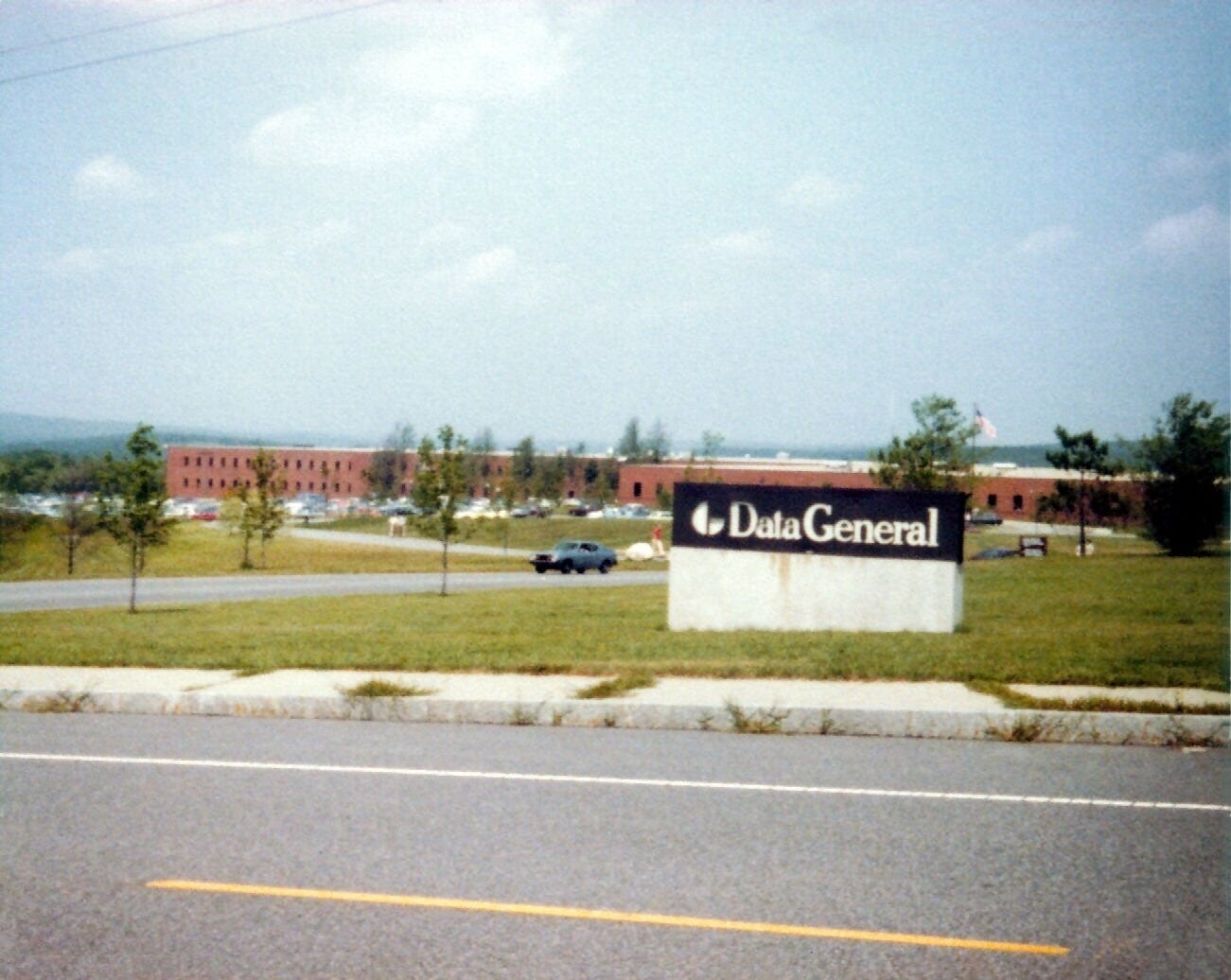
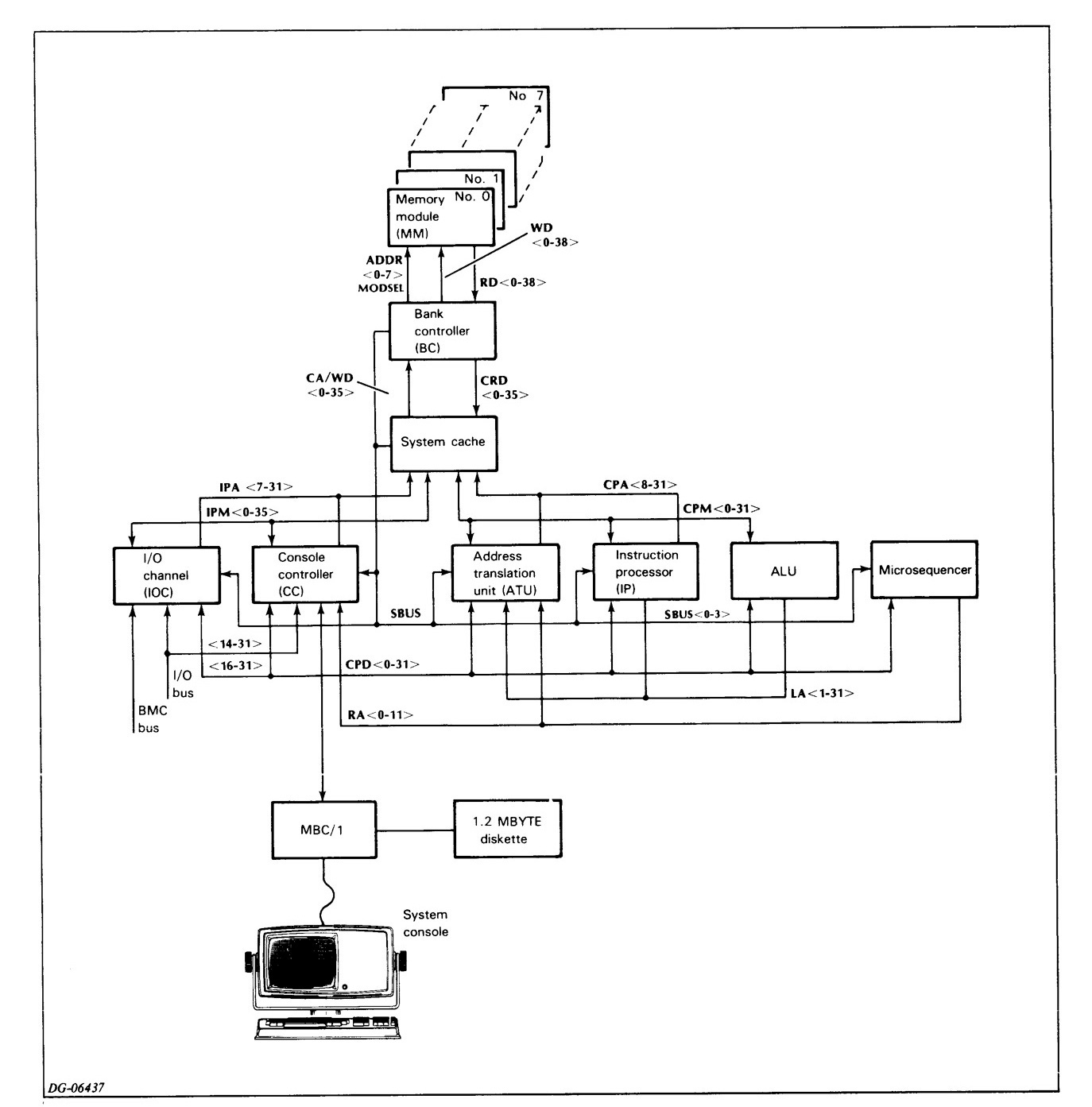
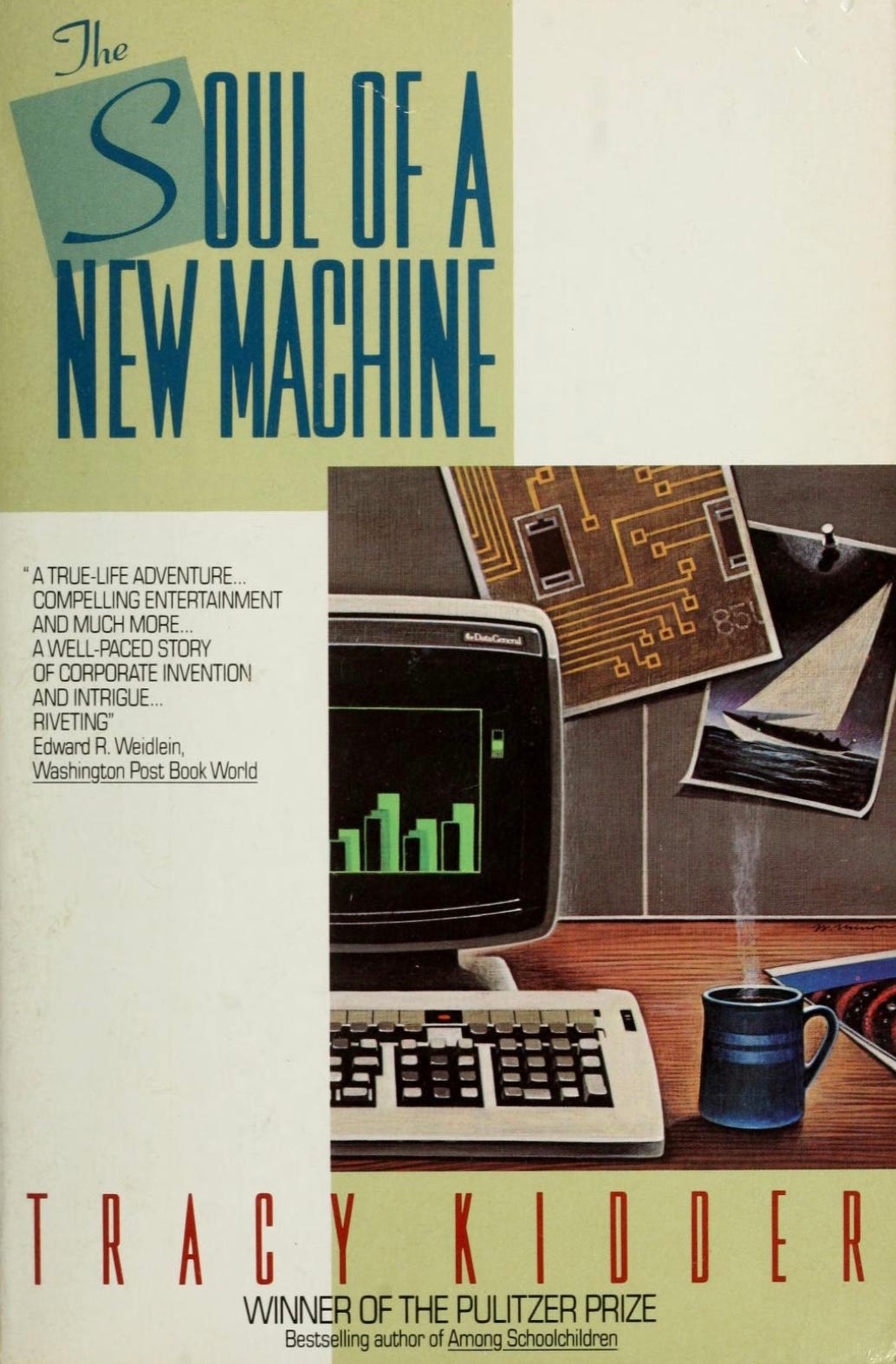

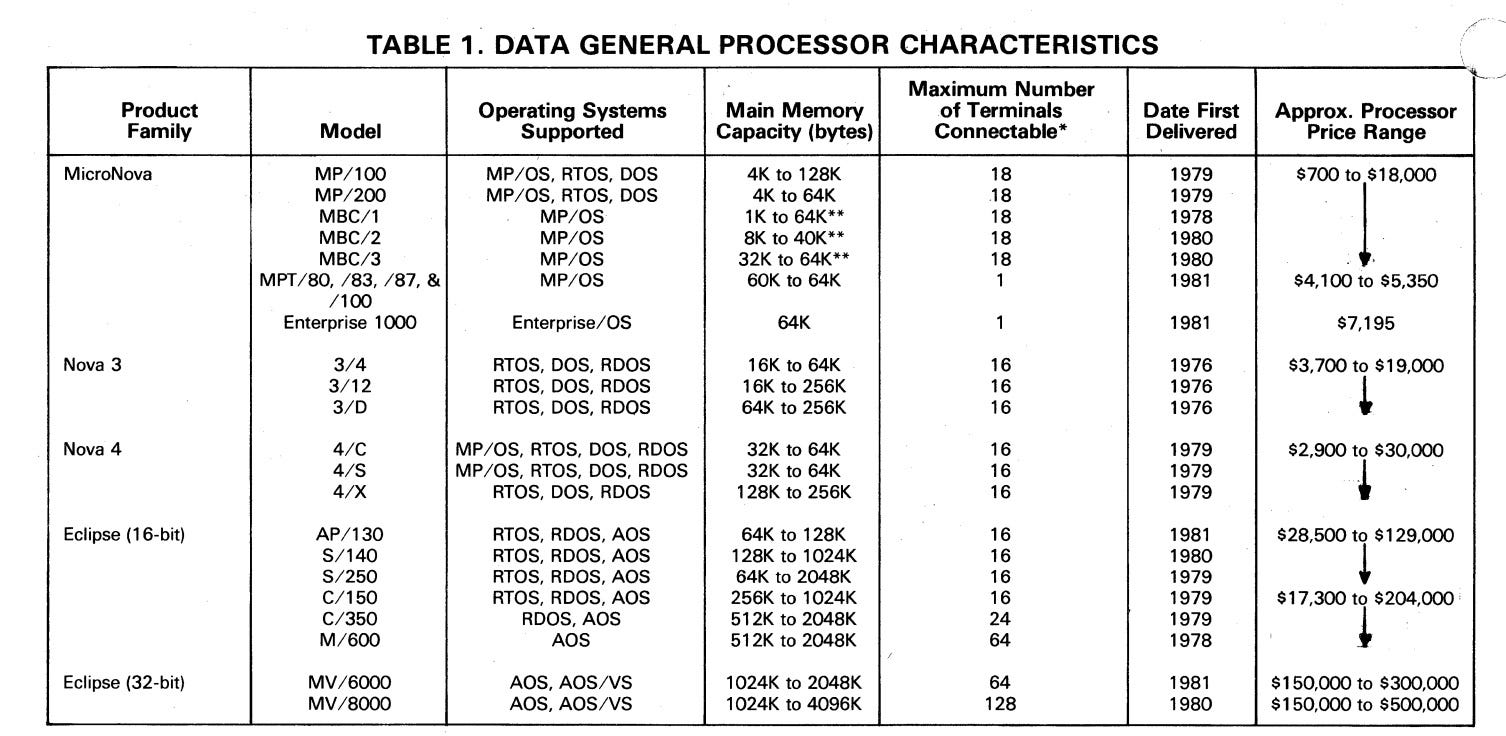
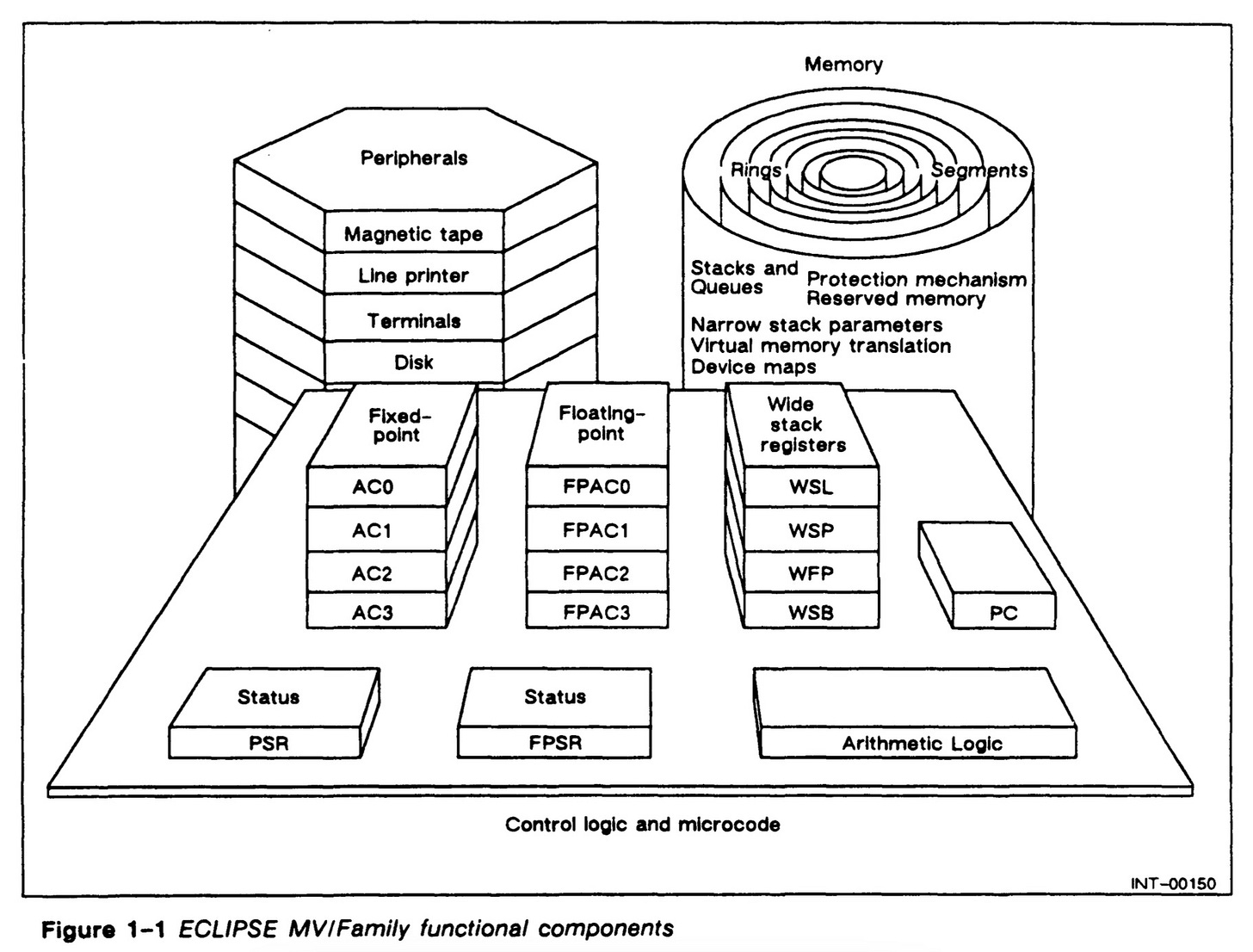
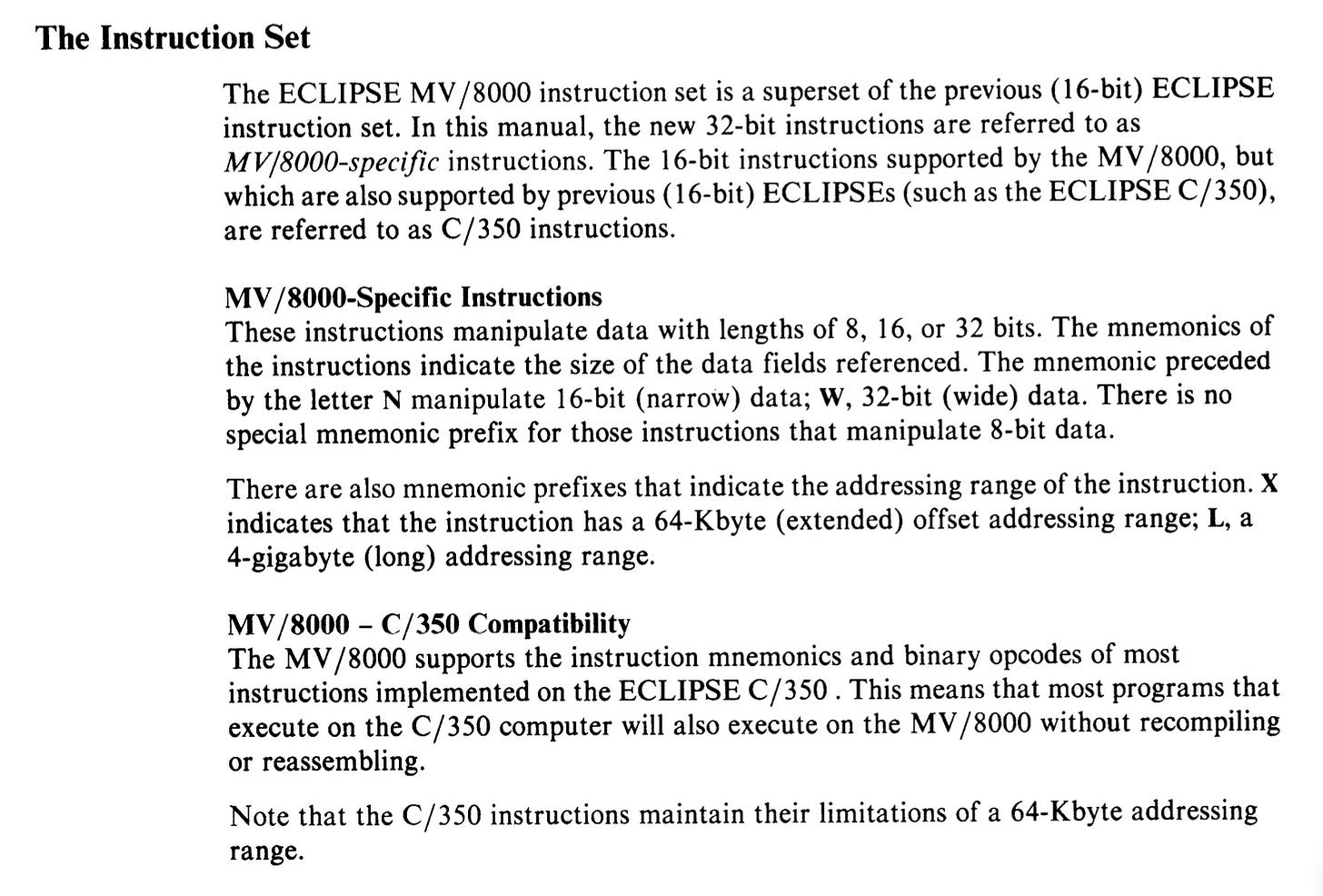
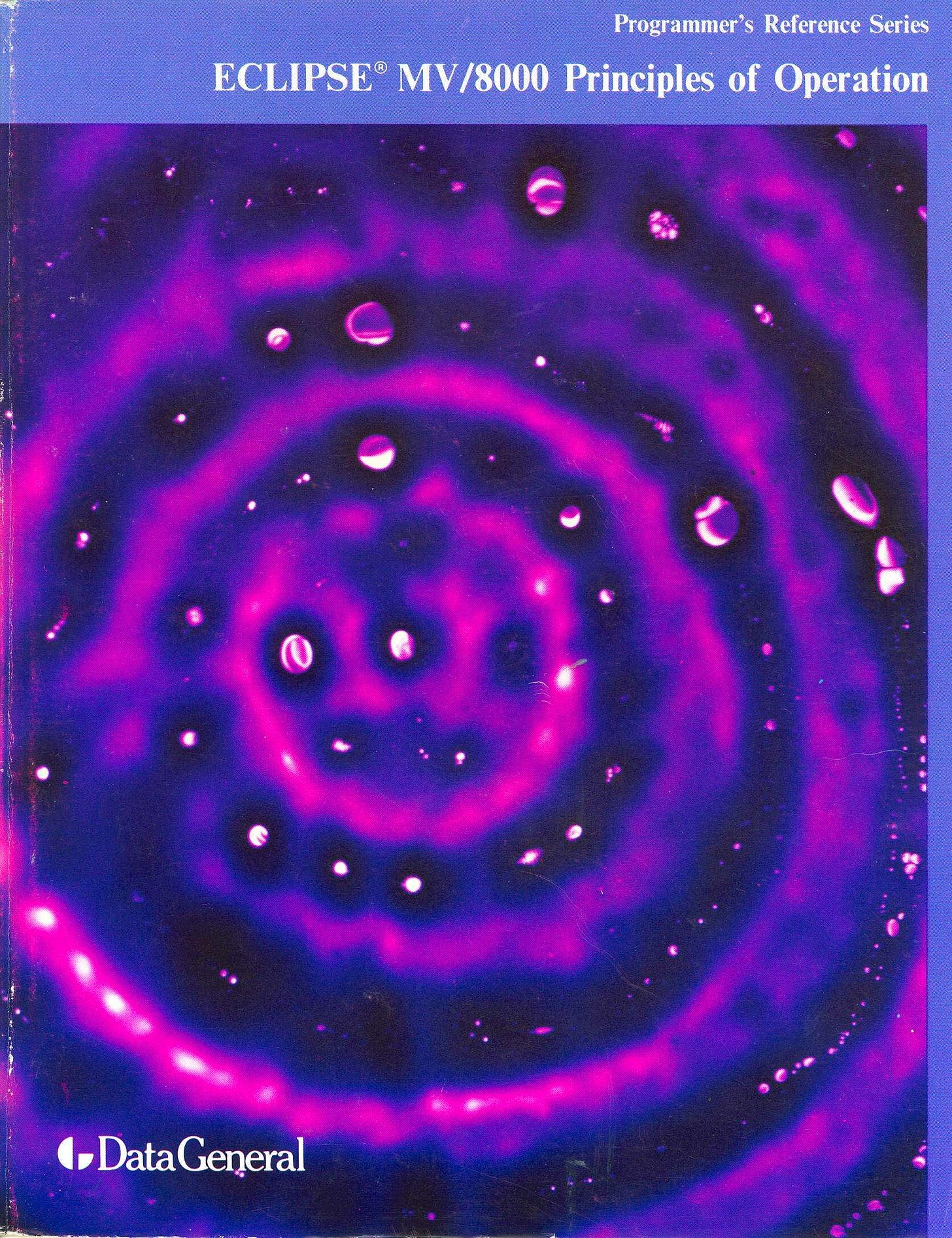
I read this soon after it was published. I started university, doing computer science, in February 1981. I saw the book in the "new arrivals" section of the university book store, glanced through, and instantly bought it. I've had to buy several more copies over the years when I've loaned mine to people and it hasn't come back.
We had DEC machines at university: a PDP-11/70 was the main computer when I arrived, supplemented in 1982 by a VAX-11/780 and then I think the year after by another 11/750. There was a PDP-11/34 with 256 KB RAM, 22 terminals, and two DECWriter dot matrix printers in the 1st year students' lab. In 1980 I was still at high school but visited a friend who skipped 7th form.
At the end of my 4th year (half way through a 2 year Masters') I got a summer holiday job working jointly for the business school's finance professor and one of his star ex-students now heading the research department at a large (by NZ standards) stockbroking company. I split my time between the university in Hamilton, using an MV/8000 at the nearby technical institute (via modem on a leased line), and the stockbroking company in Wellington which had the bigger MV/10000. I also spent time in the DG office, evaluating their database products and whether we should buy (for ~$20k I think) their COBOL, FORTRAN, or PL/I compiler for my work. I settled on PL/I as it was, if you squinted just right, able to substitute for Pascal or C.
I ended up not going back to university and worked at that and other stockbroking firms, on DG computers (and Macs connected to them), for the next decade.
Skip forward twenty five years and since 2017 I've been heavily involved in the new RISC-V microcomputers and microcontrollers. I've been involved in working with CPU core designers in a kind of ‘Hardy boys’ and ‘Microkids’ experience except that instead of microcode (which does not exist in RISC-V) I've been on the system software and runtime library side. RISC-V software such as the SBI running in Machine mode (more privileged than the operating system) is often used to do the same kinds of things that microcode was used for on older designs ... but using normal RISC instructions.
I was working on the committees designing the RISC-V Vector extension (RVV) and BitManip extension and cache control extension. Designing these new instructions involves a lot of the same trade-offs between doing something in hardware vs doing it in software as you see in "Soul". As one simple example, suppose you want to preload data in a range of addresses into cache from main memory. You could have an instruction that you give an upper and lower limit and have the hardware loop over all addresses between. Or you can provide an OS or SBI function with the same arguments, but have it do a software loop with each iteration loading one cache line of data.
One interesting thing on the RVV committee was that one of the other members was Steve Wallach who had been "Manager Advanced Development - Eclipse Systems" at Data General from 1975-1980 ... and is featured in "Soul".
So, in general, I'd say "Soul of a New Machine" was an inspiration to me and got me interested in low level computer design things, which I've always done a lot of reading and study of (e.g. the comp.arch group on usenet, from as soon as I had access to the internet in 1989) -- though it took me until thirty five years later to find work involving designing computers and instruction sets rather than merely using them.
I worked for Tom West when Soul was published. He was quite a character. When I first met him, he was firing his secretary as she had done his expense report for his last trip to Japan and had gotten the yen/dollar conversion backwards and had him owing DG hundreds of thousands of dollars. He didn’t suffer fools gladly. As a software manager in a hardware group, we got along well. Those were fun times.